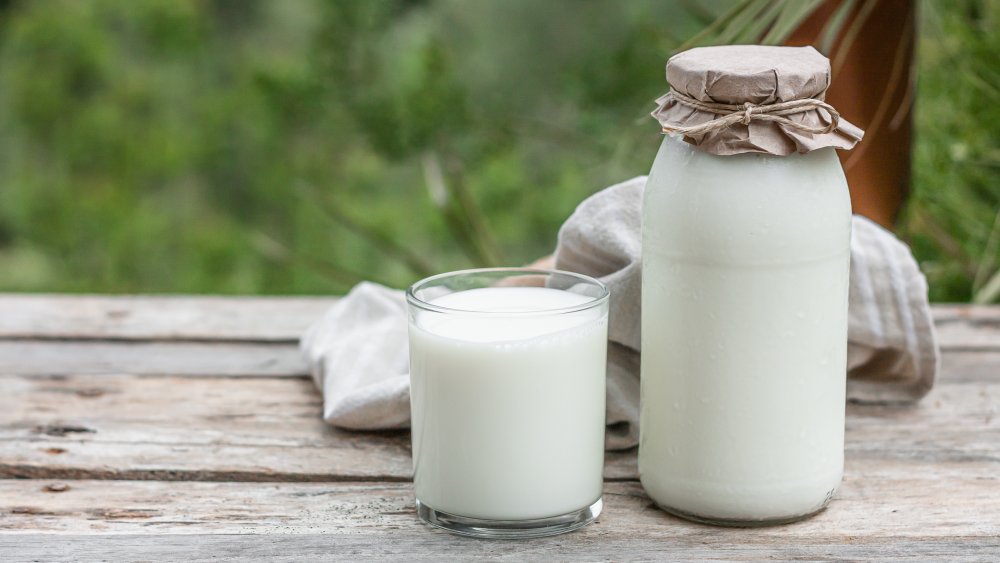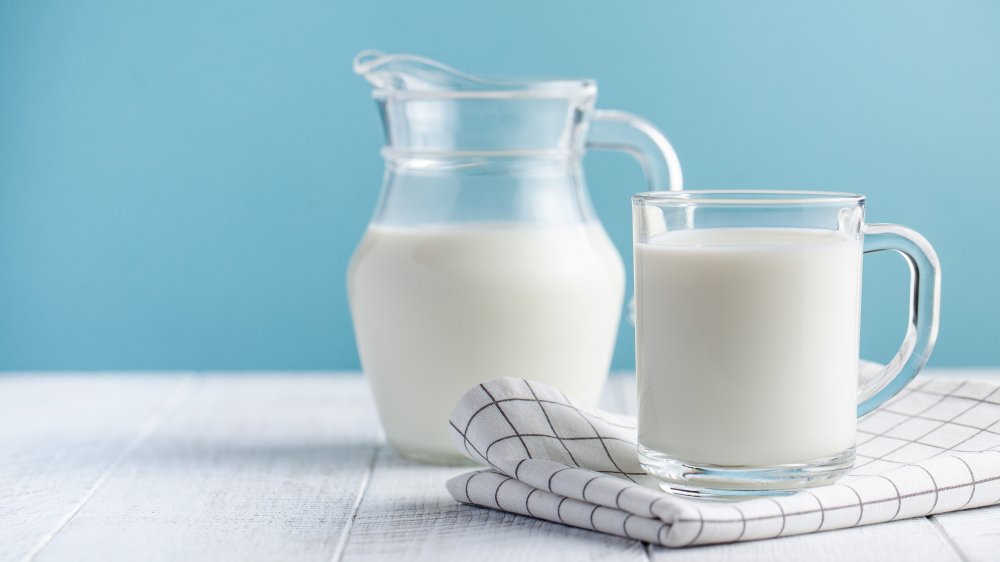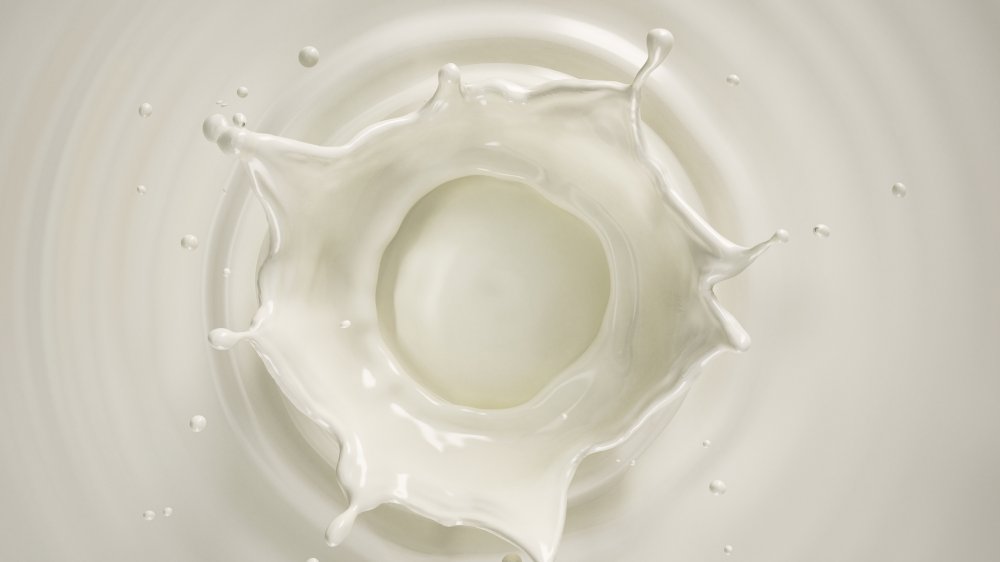The Real Reason Organic Milk Lasts Longer Than Regular Milk
A lot of people have a favorite type of milk – whether it's skim, whole milk, 2 percent, or non-dairy milk - and they don't usually stray from it unless their top choice is out of stock at the grocery store. But if you've ever been forced to settle for something other than your usual milk, you've no doubt noticed differences between what you normally buy and what you ended up with. Maybe the flavor was slightly off, or it was a little thicker than usual, or maybe one even spoiled quicker than the other. And if you've ever considered making the switch from regular to organic milk, you might've noticed that your regular milk went bad a lot quicker than the organic stuff.
It's not your imagination or a myth: Organic milk really does last longer than regular milk. As MyRecipes reports, the expiration dates indicate that organic milk can last up to a month before it's opened, while regular milk usually only has about a week to 10 days. But the longer shelf life is completely unrelated to the organic label.
How is organic milk preserved?
According to Scientific American, that "organic" label just means that the cows that produced the milk weren't given any hormones to encourage milk production or antibiotics to combat infections. That by itself doesn't have any effect on how long the milk lasts once it's packaged and on grocery store shelves, but the different processes used to preserve organic and regular milk does.
According to The New York Times, organic milk is treated through a process called UHT (or ultra-high temperature), where the milk is heated to temperatures over 280 degrees F for at least two seconds. The goal is to almost sterilize the milk, killing almost every microorganism that could be in it. However, regular milk usually undergoes a slightly less intense pasteurization process called HTST (which stands for high temperature, short time). This process heats the milk to just 161 degrees F for at least 15 seconds, and while it kills most microorganisms (particularly any that cause disease), some still survive, meaning the milk spoils sooner after it's opened.
Organic milk goes the distance
So if UHT kills more microorganisms and makes the milk less likely to spoil, why not just use that process on all milk? According to Scientific American, UHT is used on organic milk because it typically has to travel farther to reach grocery stores, and thus needs a longer shelf life. Regular milk can undergo the same process, but UHT changes the flavor a little. The high temperatures caramelize some of the sugars in the milk, giving it a sweeter flavor, and can also destroy a small amount of the vitamin content. However, one benefit is that UHT-treated milk doesn't necessarily need to be refrigerated, and can sometimes last on the shelf for up to six months.
Of course, if you live in a household where your milk never lasts long enough to get close to spoiling, regular should be just fine. But if you're always pouring the last few cups down the drain, it might be time to give organic milk (or regular UHT-treated milk) a try.


